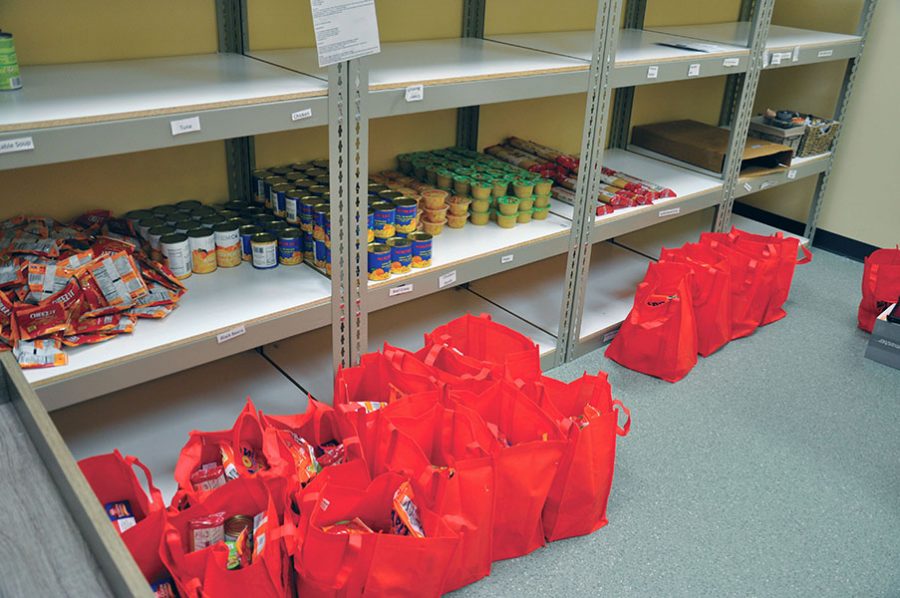Curbside due to COVID
Madison College’s food pantries find ways to help students.
The red bags hold up to 10 lbs of food for students available at the college’s drive-up food pantry sites.
September 16, 2020
The Cupboard Student Food Pantries opened up for the semester on Sept. 1 at Truax Campus and Sept. 3 at Goodman South Campus. The food pantry services, which first started at Truax almost a year ago, have been providing students with a source of food available once a week as well as inform and educate those who are looking for help dealing with food insecurity.
Due to a desire to ensure that everyone stays healthy through the Covid-19 pandemic, the Cupboard has made some changes to how students can pick up food, receive helpful tips and information to help keep them fed, and learn ways to prepare food and eat well.
“Normally students could stop in and self-collect the food, but now with the health regulations we can’t do that,” said Denise Holin, a Student Health Educator that works with students and The Cupboard Student Food Pantry.
To minimize contact, The Cupboard has moved to curbside pickup. Students are asked to have their OneCard or Student ID ready to confirm you are enrolled in a degree credit course. For the first pick-up, students will be asked to fill out an information request form to help Second Harvest Food Bank and Madison College understand students’ needs. Students are asked to remain in their cars and staff will be able to put the 10 pounds of food directly into the trunk of a student’s car or leave the food for students to load into the car themselves. They observe the usual six feet of distance for safety and ask that if you have had Covid-19 symptoms or tested positive that you don’t come to campus for food pick up.
According to Holin, they have already ordered 3600 pounds of food to be able to provide for Madison College Students, with 400 or so pounds already being handed out since the pantries have opened this semester.
With less contact available, the food bags have some helpful information and recipes included to continue to provide help beyond the obvious benefit that food can provide those who need it.
“Our goal is not to just give students food, but also to educate them,” said Holin. Information like locations to other food pantries, where students can pick up even more food if needed, recipes and meal prep plans to make the best of the time and food that students have available, and nutrition guides. The food pantries are aiming to “inform, educate, and train students to help deal with food insecurity,” said Holin.
“Ten pounds is not enough, but the plan is to help by doing more than just giving food.”
Holin encourages students to use the pantries if they have any need to. “Our students need to feel like they have these resources available,” she said.
Despite the changes in process due to health regulations, the pantries have seen plenty of activity already, and Holin said that “given the circumstances I feel that this is the best way we can serve the students.”
Holin is disappointed that they are unable to spend more time one on one with the students who visit the pantries, but shared that she has been happy to see people able to make use of their services and that “students have been very respectful and thankful, which is great to see.”
Students can access The Cupboard Student Food Pantries Tuesdays from noon to 2 p.m. and Wednesdays from 9 to 11 a.m. at the Truax Campus outside the GHC entrance of the Health Education and Information Technology building, and Thursdays from 2 to 4 p.m. at Goodman South Campus at the Shipping and Receiving Entrance.































